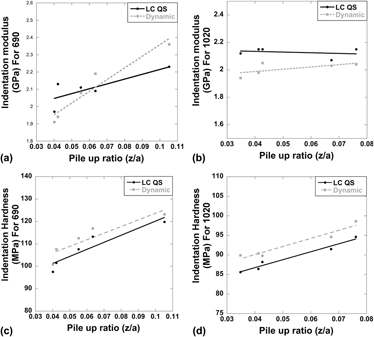Published online by Cambridge University Press: 21 May 2015

The local micromechanical properties of two cyclic olefin copolymers (COCs) under an applied strain were measured using quasi-static (QS) and dynamic nanoindentation. Samples were prepared by compression molding and tested at five various applied strain levels, leading to a variation in pileup around the residual indentation impression. The variation in the resulting pileup morphology and the subsequent perceived changes in modulus and hardness as a function of applied strain was quantified for these COCs. The perceived mechanical properties determined using both QS and dynamic tests were influenced by the relative out of plane deformation, and as such provide a method to map local variations in residual stresses and strains without the need to measure residual impression pileup for each indentation. The dynamically measured properties appear to provide a more consistent correlation with both the applied strain and pile up behavior around the indents than the modulus and hardness determined from QS nanoindentation.
Contributing Editor: Linda S. Schadler